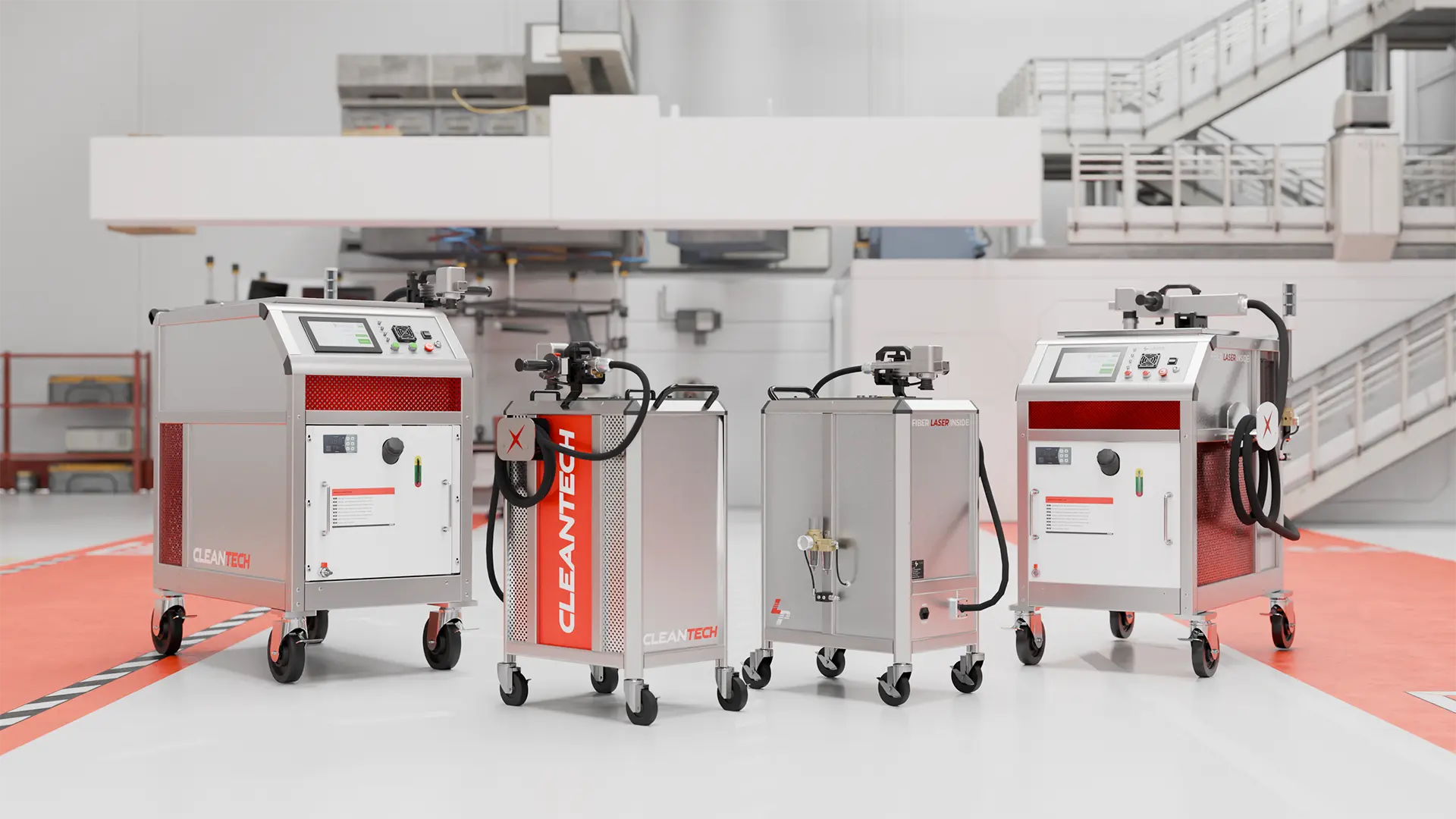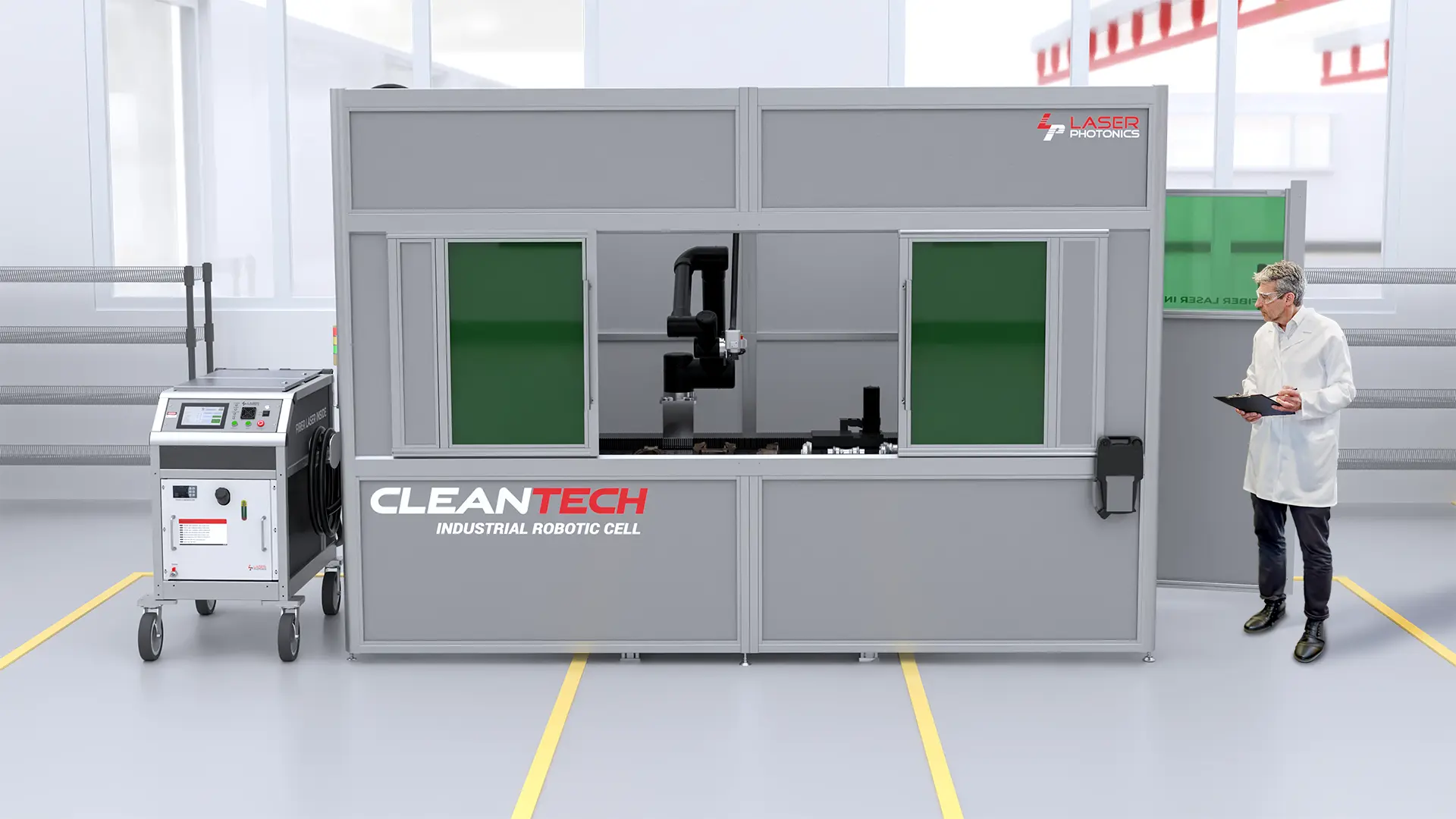Industrial Cleaning Made Sustainable
The relentless pursuit of production excellence often overshadows the environmental footprint, particularly in areas like industrial cleaning. Common surface preparation methods, like abrasive blasting, chemical stripping, and needle gunning, come with a slew of setbacks in tow for manufacturers aiming for a safer, greener future. They introduce harmful particulates into the environment, consume vast amounts of water and energy, generate hazardous waste requiring specialized disposal, and contribute significantly to workplace accidents.
This is where laser cleaning emerges not just as a cleaner alternative, but as a transformative technology fundamentally aligning with the core tenets of green manufacturing. By offering precision decontamination without consumable use or secondary waste generation, it presents a viable pathway for manufacturers to meet their targets on reducing environmental footprints.

Staying Ahead of Policy Shifts
Sticking to the principles of sustainability is essential for manufacturers even amid the changing political stance on climate change. The One Big Beautiful Bill pulls back billions of dollars in climate and clean energy funding; however, proactive manufacturers will see this as a chance to lead in green technology implementation among competing businesses. Advanced laser technologies that offer low-waste solutions, like CleanTech by Laser Photonics, present a way to stay ahead of the game.
This year, the U.S. government is doubling down on reshoring efforts to revitalize domestic manufacturing with the Made in America Manufacturing Initiative. With expanded access to capital, support infrastructure, and workforce development, manufacturers will decide on how to invest their new resources. Making the choice to implement green technologies and sustainable practices is a proactive approach adopted by manufacturers who seek to stand out in the market as a supplier who thinks generations ahead.
Affiliates of Laser Photonics: CMS Laser and Fonon Technologies lead in delivering American-made, TAA-compliant laser cleaning systems that meet both environmental and procurement mandates. By sourcing domestically and choosing eco-friendly technologies, manufacturers can stay ahead of policy shifts, reduce operational risks, and position themselves for success in a changing industrial economy.

Technology Overview: Laser Cleaning
Laser cleaning utilizes focused, high-energy laser beams to remove contaminants from surfaces. The process operates on principles of selective ablation, targeting specific materials while leaving desired materials intact. This is a light-based, highly precise technology that greatly speeds up decontamination, removing tough substrates such as corrosion, mill scale, paint, oil, powder coating, anodization, carbon deposits, and more.
Unlike traditional methods that employ abrasive media (sand, grit, steel shot) or chemical strippers, which leave residues and require containment, laser cleaning generates minimal secondary waste. Laser cleaning generates minimal dust that is easily contained with a fume extraction system and a HEPA filter, and it requires minimal consumables such as protective glass replacements and water, depending on the system configurations. Read more about the maintenance of a CleanTech laser cleaning system here.
Today, manufacturers producing metal parts across many industries are choosing laser cleaning to prepare surfaces efficiently and sustainably.
Ready to Find Your Laser Cleaning Solution?
Whether you need portable flexibility, high-volume automation, or specialized compliance features, our experts will help you select and configure the right system for your operations.
Contact Us
Tailored Solution for Industrial Workflows
Laser cleaning is very versatile, but it isn’t a one-size-fits-all solution; understanding material compatibility and selecting the right laser parameters is essential for maximizing the performance and longevity of your equipment.
- Metallic Surfaces: Laser cleaning is an excellent surface preparation tool for metals and alloys like stainless steel, aluminum, copper, and titanium. This technology is invaluable for removing oil and soot in automotive manufacturing, preparing surfaces in pre- and post-welding, texturing metal in metal fabrication and machining, and many other applications.
- Composite Materials: For delicate composite structures – such as carbon fiber reinforced polymers (CFRP) used in modern aircraft engines or wind turbine blades – laser cleaning offers a way to remove adhesives, coatings, or tooling marks without compromising the integrity of the fibers underneath.
- Acrylic & Thermoplastics: Laser systems can be adjusted to selectively ablate specific paint types or contaminants from plastics like ABS or polycarbonate, avoiding thermal degradation that could warp parts and generating minimal waste for disposal.
- Ceramics & Glass: These brittle materials often require gentle cleaning. Laser methods can effectively remove glaze defects, ink stains, or particulate contamination from ceramic tiles in construction or glass components without risk of cracking.
Check out our Laser Application Library to learn more about some of the substrates we work with.

Robotics & Automation in Green Manufacturing
Sustainable surface preparation isn’t just about a waste-free cleaning method – it’s also about optimizing time-consuming operations. Laser Photonics and its subsidiary CMS Laser offer advanced solutions that integrate robotics, mechanized conveyor systems, smart vision alignment, and software controls tailored to facilitate specific applications. Automation ensures uniform cleaning quality, reduces operator fatigue, minimizes downtime, and enables 24/7 operation while maintaining the eco-friendly benefits of laser technology.
Whether you need high-volume throughput, complex part handling, or integration with existing production lines, we deliver turnkey solutions built for precision, reliability, and scalability. By combining eco-friendly laser technology with intelligent automation, Laser Photonics helps customers boost productivity, reduce operational risks, and stay ahead in a competitive, sustainability-driven marketplace.
Choosing Laser Cleaning for Your ESG Strategy
Consider several factors as you move towards your environmental, social, and governance (ESG) goals.
When to Consider Laser Cleaning?
- You deal with complex geometries or intricate components where traditional surface preparation methods may cause damage.
- Your facility handles sensitive, valuable materials that require a highly controlled and pristine environment.
- You are seeking ways to reduce water consumption, hazardous waste, and post-processing cleanup labor associated with cleaning processes.
- Your site necessitates extremely low pollution for the safety of workers, local communities, and ecosystems.
Why Laser Cleaning?
- To significantly reduce the footprint of surface preparation processes by eliminating secondary waste streams and consumable use.
- To improve workplace health and safety through protecting workers and the equipment.
- To enhance product quality and reliability by preventing damage from loose abrasive particles or chemical residues.
More to Know
To navigate the complexities of sustainable industrial processes, explore these insightful blog posts for a deeper understanding of laser technology and its benefits:
Embracing laser cleaning technology not only ensures efficient surface preparation but also aligns with the growing demand for sustainable manufacturing practices, setting the stage for greener industrial solutions in 2025 and beyond.
Ready to explore if laser cleaning aligns with your sustainable manufacturing objectives?
Contact our experts today for a personalized consultation detailing the specific advantages of integrating laser technology into industrial workflows.